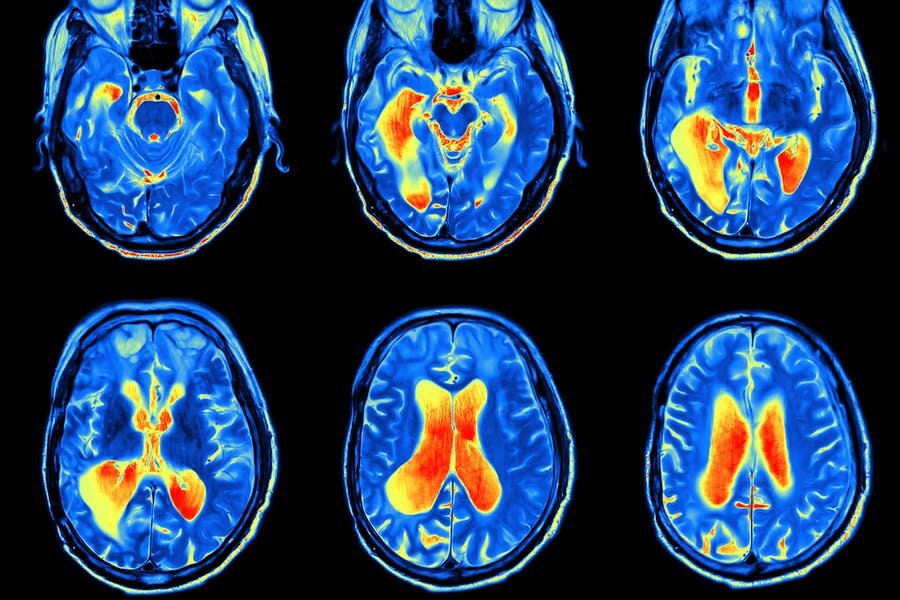Transcranial Magnetic Stimulation (TMS) re-wires the brain into a healthy state of functioning.
If you’ve been struggling with Depression…
You may have seen such brain scans before. These images hint the promise of something objective. Something to identify and separate from the subjective despair and feelings of guilt, shame, entrapment, and hopelessness.
So that must mean we can fix it, right?
Relief
…BUT…
how come this didn’t work?
While medications do help some people, the first trial works about only a third of the time [1]. Subsequent medication trials have increasingly lower success rates. This is unfortunate.
That is because medications are only ONE piece of a very complex phenomenon - YOU
Fortunately, there is an alternative:
TMS
Transcranial Magnetic Stimulation can clear the sluggishness of cognitive fog, sharpen focus, enhance memory, and increase energy.
It can breathe life.
How?
TMS increases activity in a brain region responsible for many important functions:
Secondarily, this also stimulates entire sets of brain networks known as Attention Networks:
In the Depressed Brain, these networks are under-active:
Prefrontal Cortex is under-active and compromised in Depression [2].
Why are Attention Networks compromised?
Because the Default Mode Network is hyper-active:
Normal Default Mode Network activity is healthy and essential for our experience of life. Increased and dysregulated Default Mode Network activity correlate with core symptoms of Depression [3]. Life is perceived through negative valence.
Dysregulated Default Mode Network hijacks the brain’s Attention Networks:
Increased and dysregulated Default Mode Network activity results in reduced and compromised Attention Network activity because of Anti-correlation [4]. Learn more about Anti-correlation and brain networks here.
This means the Depressed Brain cannot regulate emotions. Cognitive Control over Emotion is impaired:
Chicken or the Egg: Are Attention Networks compromised because Default Mode Network activity is dysregulated, or is Default Mode Network activity increased because Attention Networks cannot regulate it?
As with most things in life, likely a bit of both. In addition to increased DMN activity, the failure to suppress DMN activity is also affected in Depression [5] - hence, impaired Cognitive Control of Emotion [6].
Thankfully, TMS can restore the balance.
TMS can increase Prefrontal Cortex activity and restore Cognitive Control over Emotion:
TMS increases Central Executive Network (CEN) activity - a particular type of Attention Network, which in turn modulates Default Mode Network activity. By extension, this can restore Cognitive Control over Emotion [7, 8].
In summary, Transcranial Magnetic Stimulation can optimize the brain’s capacity to prevent dys-regulation through the Cognitive Control of Emotion. By the end of the treatment course, this can reverse Depression.
~You have your feelings, instead of your feelings having you ~
REFERENCES
Rush AJ, Trivedi MH, Wisniewski SR, Nierenberg AA, Stewart JW, Warden D, Niederehe G, Thase ME, Lavori PW, Lebowitz BD, McGrath PJ, Rosenbaum JF, Sackeim HA, Kupfer DJ, Luther J, Fava M. Acute and longer-term outcomes in depressed outpatients requiring one or several treatment steps: a STAR*D report. Am J Psychiatry. 2006 Nov;163(11):1905-17. doi: 10.1176/ajp.2006.163.11.1905. PMID: 17074942.
Mayberg HS. Limbic-cortical dysregulation: a proposed model of depression. J Neuropsychiatry Clin Neurosci. 1997 Summer;9(3):471-81. doi: 10.1176/jnp.9.3.471. PMID: 9276848.
Sheline YI, Barch DM, Price JL, Rundle MM, Vaishnavi SN, Snyder AZ, Mintun MA, Wang S, Coalson RS, Raichle ME. The default mode network and self-referential processes in depression. Proc Natl Acad Sci U S A. 2009 Feb 10;106(6):1942-7. doi: 10.1073/pnas.0812686106. Epub 2009 Jan 26. PMID: 19171889; PMCID: PMC2631078.
Fox MD, Snyder AZ, Vincent JL, Corbetta M, Van Essen DC, Raichle ME. The human brain is intrinsically organized into dynamic, anticorrelated functional networks. Proc Natl Acad Sci U S A. 2005 Jul 5;102(27):9673-8. doi: 10.1073/pnas.0504136102. Epub 2005 Jun 23. PMID: 15976020; PMCID: PMC1157105.
Anticevic A, Cole MW, Murray JD, Corlett PR, Wang XJ, Krystal JH. The role of default network deactivation in cognition and disease. Trends Cogn Sci. 2012 Dec;16(12):584-92. doi: 10.1016/j.tics.2012.10.008. Epub 2012 Nov 8. PMID: 23142417; PMCID: PMC3501603.
Ochsner KN, Gross JJ. The cognitive control of emotion. Trends Cogn Sci. 2005 May;9(5):242-9. doi: 10.1016/j.tics.2005.03.010. PMID: 15866151.
Liston C, Chen AC, Zebley BD, Drysdale AT, Gordon R, Leuchter B, Voss HU, Casey BJ, Etkin A, Dubin MJ. Default mode network mechanisms of transcranial magnetic stimulation in depression. Biol Psychiatry. 2014 Oct 1;76(7):517-26. doi: 10.1016/j.biopsych.2014.01.023. Epub 2014 Feb 5. PMID: 24629537; PMCID: PMC4209727.
Chen AC, Oathes DJ, Chang C, Bradley T, Zhou ZW, Williams LM, Glover GH, Deisseroth K, Etkin A. Causal interactions between fronto-parietal central executive and default-mode networks in humans. Proc Natl Acad Sci U S A. 2013 Dec 3;110(49):19944-9. doi: 10.1073/pnas.1311772110. Epub 2013 Nov 18. PMID: 24248372; PMCID: PMC3856839.










![Prefrontal Cortex is under-active and compromised in Depression [2].](https://images.squarespace-cdn.com/content/v1/5efcaed61bfd5755bf0c4107/1618598144461-RSZJWVD5HCEM20HBVLQI/The%2BDepressed%2BBrain_Cognitive%2BSymptoms_logo.jpg)
![Normal Default Mode Network activity is healthy and essential for our experience of life. Increased and dysregulated Default Mode Network activity correlate with core symptoms of Depression [3]. Life is perceived through negative valence.](https://images.squarespace-cdn.com/content/v1/5efcaed61bfd5755bf0c4107/1618598354475-WTK18R2CJ8G3VWM9Z3MZ/The%2BDepressed%2BBrain_Depressive%2BSymptoms_logo.jpg)
![Increased and dysregulated Default Mode Network activity results in reduced and compromised Attention Network activity because of Anti-correlation [4]. Learn more about Anti-correlation and brain networks here.](https://images.squarespace-cdn.com/content/v1/5efcaed61bfd5755bf0c4107/1618598660476-E3RB4OEBLVZYK8LAFMLD/The%2BDepressed%2BBrain_DMN%2Bhijacks%2BATN_logo.jpg)

![TMS increases Central Executive Network (CEN) activity - a particular type of Attention Network, which in turn modulates Default Mode Network activity. By extension, this can restore Cognitive Control over Emotion [7, 8].](https://images.squarespace-cdn.com/content/v1/5efcaed61bfd5755bf0c4107/1618598917097-KAVLLDBOAM321SB7XBOA/Restored%2BCognitive%2BControl%2Bover%2BEmotion_logo.jpg)